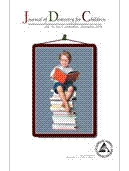
Current Trends in Pulp Therapy: A Survey Analyzing Pulpotomy Techniques Taught in Pediatric Dental Residency Programs
Purpose: The study's purpose was to survey directors of pediatric dental residency programs in order to evaluate the materials currently being taught and used for pulpotomy procedures for primary teeth in educational and clinical settings.
Methods: A web-based survey was emailed to all graduate pediatric dental residency program directors in the United States.
Results: Seventy one emails were sent to program directors, 47 responded but only 39 respondents (55%) were included in the study. Results suggested a slight decrease in utilization of formocresol 1:5 dilution (P<.01) and an increase in both ferric sulfate (P<.05) and mineral trioxide aggregate (MTA; P<.02) utilization for primary tooth pulpotomy procedures. The most common reasons for elimination of formocresol (18% of respondents) were systemic health concerns and carcinogenicity, in addition to evidence-based literature. Even though 25% of respondents have begun to use MTA for primary pulpotomy procedures, the most common reason for utilization of other medicaments over MTA was its higher cost.
Conclusions: With 82% of graduate pediatric dental residency programs still utilizing formocresol 1:5 dilution for pulpotomy procedures in primary teeth, there has been no major shift away from its clinical use, in spite of increased usage of newer medicaments over the last 5 years.
Methods: A web-based survey was emailed to all graduate pediatric dental residency program directors in the United States.
Results: Seventy one emails were sent to program directors, 47 responded but only 39 respondents (55%) were included in the study. Results suggested a slight decrease in utilization of formocresol 1:5 dilution (P<.01) and an increase in both ferric sulfate (P<.05) and mineral trioxide aggregate (MTA; P<.02) utilization for primary tooth pulpotomy procedures. The most common reasons for elimination of formocresol (18% of respondents) were systemic health concerns and carcinogenicity, in addition to evidence-based literature. Even though 25% of respondents have begun to use MTA for primary pulpotomy procedures, the most common reason for utilization of other medicaments over MTA was its higher cost.
Conclusions: With 82% of graduate pediatric dental residency programs still utilizing formocresol 1:5 dilution for pulpotomy procedures in primary teeth, there has been no major shift away from its clinical use, in spite of increased usage of newer medicaments over the last 5 years.
Keywords: FORMOCRESOL; PEDIATRIC DENTISTRY; PULPOTOMY
Document Type: Research Article
Affiliations: 1: Department of Pediatric Dentistry, School of Dentistry, Indiana University, Indianapolis, Ind 2: private practioner in Williamson, Tenn 3: Departments of Pediatric Dentistry and Orthodontics, James Whitcomb Riley Hospital for Children, School of Dentistry, Indiana University, Indianapolis, Ind 4: School of Dentistry, Indiana University, Indianapolis, Ind 5: Department of Preventive and Community Dentistry, School of Dentistry, Indiana University, Indianapolis, Ind
Publication date: 01 January 2013
- Acquired after the merger between the American Society of Dentistry for Children and the American Academy of Pediatric Dentistry in 2002, the Journal of Dentistry for Children (JDC) is an internationally renowned journal whose publishing dates back to 1934. Published three times a year, JDC promotes the practice, education and research specifically related to the specialty of pediatric dentistry. It covers a wide range of topics related to the clinical care of children, from clinical techniques of daily importance to the practitioner, to studies on child behavior and growth and development. JDC also provides information on the physical, psychological and emotional conditions of children as they relate to and affect their dental health.
- Information for Authors
- Submit a Paper
- Subscribe to this Title
- Membership Information
- Information for Advertisers
- Ingenta Connect is not responsible for the content or availability of external websites
- Access Key
- Free content
- Partial Free content
- New content
- Open access content
- Partial Open access content
- Subscribed content
- Partial Subscribed content
- Free trial content